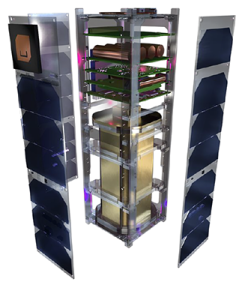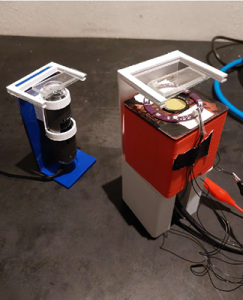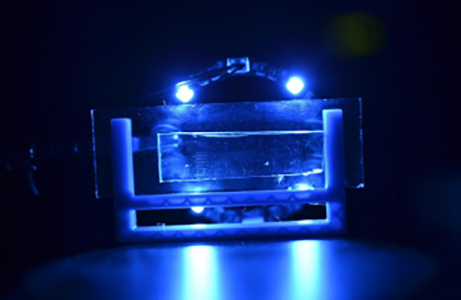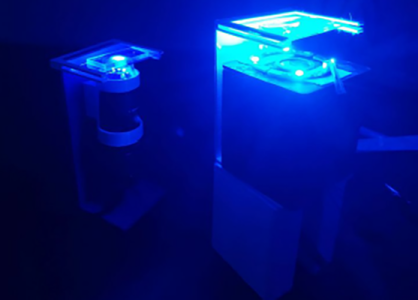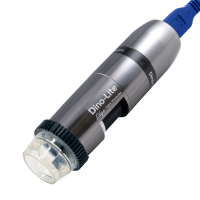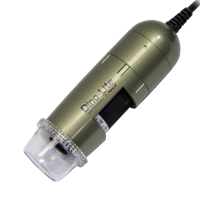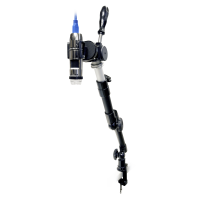Using Dino-Lite in a space program
AcubeSAT is a multidisciplinary project by SpaceDot, a team led by ambitious students and researchers primarily from the Aristotle University of Thessaloniki. The space mission is realized with the support of the European Space Agency (ESA) Education Office. The team is one of the three accepted in the “Fly Your Satellite!”* European Space Agency programme. In this application story we take a look at how Dino-Lite Microscopes are integrated in a SpaceDot nanosatellite.
The nanosatellite currently designed by SpaceDot satellite is approximately 34 cm in size and is expected to go into orbit in 2024! The satellite will have an in-house built pressurized vessel containing a miniaturized imaging system, a culturing platform and a lab-on-a-chip, able to sustain yeast Saccharomyces cerevisiae growth, in order to probe the effects of radiation and microgravity conditions in low Earth orbit. The interdisciplinary nature and inherent complexity of the design, as dictated by the mission goals, demand rapid and flexible prototyping. The AM4515T4-GFBW is routinely used by the team in a variety of workflows meant for characterization and verification of the infrastructure hosting the biology inside the payload of the nanosatellite. The imaging capabilities of the microscope allow the team members to examine individual cell populations inside intricate channels at the microscale, while its miniature form factor and portability render it easy to integrate in testing setups.
The Dino-Lite AM4515T4-GFBW digital microscope is optimized for research and viewing fluorescent objects by using 480nm excitation LEDs. It has a long-pass type 510nm emission filter that is designed to observe a wide range fluorophores with applications in developmental biology, pathology, and anatomy. With its high magnification of 400~470x, it reveals even the smallest details on all kinds of objects. All of these factors make the AM4515T4-GFBW the smallest fluorescence microscope in the world, capable of many applications and visualizing a vast range of fluorescence.
As procurement and manufacturing of the nanosatellite continue, students will start qualifying their payload and critical subsystems to ensure total confidence in their performance prior to satellite integration.
*Within the Fly Your Satellite! programme, students have the unique opportunity to get introduced to the working methods adopted in professional space programmes by participating in their own student satellite project, which is designed and developed by the universities themselves, and whose development is funded by those universities as well.
The nanosatellite currently designed by SpaceDot satellite is approximately 34 cm in size and is expected to go into orbit in 2024! The satellite will have an in-house built pressurized vessel containing a miniaturized imaging system, a culturing platform and a lab-on-a-chip, able to sustain yeast Saccharomyces cerevisiae growth, in order to probe the effects of radiation and microgravity conditions in low Earth orbit. The interdisciplinary nature and inherent complexity of the design, as dictated by the mission goals, demand rapid and flexible prototyping. The AM4515T4-GFBW is routinely used by the team in a variety of workflows meant for characterization and verification of the infrastructure hosting the biology inside the payload of the nanosatellite. The imaging capabilities of the microscope allow the team members to examine individual cell populations inside intricate channels at the microscale, while its miniature form factor and portability render it easy to integrate in testing setups.
The Dino-Lite AM4515T4-GFBW digital microscope is optimized for research and viewing fluorescent objects by using 480nm excitation LEDs. It has a long-pass type 510nm emission filter that is designed to observe a wide range fluorophores with applications in developmental biology, pathology, and anatomy. With its high magnification of 400~470x, it reveals even the smallest details on all kinds of objects. All of these factors make the AM4515T4-GFBW the smallest fluorescence microscope in the world, capable of many applications and visualizing a vast range of fluorescence.
As procurement and manufacturing of the nanosatellite continue, students will start qualifying their payload and critical subsystems to ensure total confidence in their performance prior to satellite integration.
*Within the Fly Your Satellite! programme, students have the unique opportunity to get introduced to the working methods adopted in professional space programmes by participating in their own student satellite project, which is designed and developed by the universities themselves, and whose development is funded by those universities as well.











